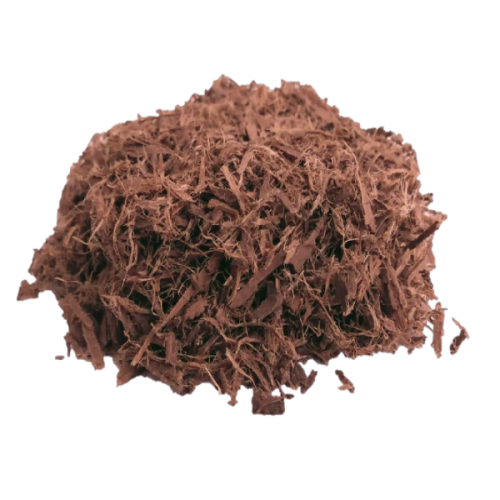Mimosa Hostilis Root Bark holds an important place in standard practices and fashionable botanical applications. This article explores the characteristics, origins, and customary questions encompassing this extraordinary plant content, with a certain give attention to the prized Brazillian Mimosa Hostilis Root Barks.
Precisely what is Mimosa Hostilis Root Bark?
Mimosa Hostilis, scientifically generally known as Mimosa tenuiflora, is a perennial tree native towards the northeastern location of Brazil and areas of Mexico. The root bark of this tree has become made use of for hundreds of years by indigenous communities for several sensible and standard uses. The inner root bark incorporates notable concentrations of tannins, alkaloids, and also other phytochemicals that add to its unique properties and purposes.
The tree by itself is remarkably resilient, capable of surviving in very poor soils and drought disorders. This hardiness contributes on the strong character in the bark and its chemical profile. When harvested sustainably, the outer root bark is very carefully separated to obtain the valuable inner bark, that's then dried and ready for use.
Brazilian Mimosa Hostilis Root Bark: The Gold Normal
When speaking about top quality in Mimosa Hostilis goods, the Brazillian Mimosa Hostilis Root Barks are frequently thought of outstanding while in the botanical industry. Many components add to this popularity:
Ideal Developing Conditions
The particular soil composition, climate, and ecosystem of Brazil's northeastern region make perfect problems for Mimosa tenuiflora to produce its entire chemical opportunity. The mineral-wealthy soils and specific pattern of rainfall and sunlight in this location appear to reinforce the focus of active compounds in the root bark.Common Harvesting Expertise
In areas where by Mimosa Hostilis has long been applied traditionally, harvesters have created refined procedures for sustainable harvesting that preserves both of those the tree and the potency with the bark. This understanding, handed down by generations, ensures that the bark is collected at the proper time of year and processed working with methods that manage its integrity.Unique Bodily Qualities
Brazilian Mimosa Hostilis Root Bark ordinarily displays a loaded reddish-brown to purple internal bark having a fibrous, dense texture. The visual qualities usually serve as an Preliminary indicator of good quality, with experienced customers recognizing the distinct physical appearance of bark from this location.
Common Apps and Works by using
The apps of Mimosa Hostilis Root Bark span both of those common and present day contexts, though It really is critical to know the lawful standing of such works by using varies by country and jurisdiction.
Traditional Craft and Apply
Indigenous communities have Traditionally made use of Mimosa Hostilis Root Bark for making normal dyes for textiles, While using the bark creating beautiful shades of purple, burgundy, and deep brown. The tannin-abundant properties also made it useful for leather tanning and also other practical programs.Contemporary Botanical Analysis
Present-day curiosity in Mimosa Hostilis Root Bark extends to numerous fields of botanical investigation, particularly researching its chemical composition and prospective programs. Researchers have identified numerous intriguing compounds throughout the bark that warrant even more scientific investigation.Horticultural and Agricultural Uses
In permaculture and sustainable agriculture, Mimosa tenuiflora is valued being a nitrogen-correcting species that will increase soil good quality. The bark alone, when processed, may be used as a organic mulch or soil amendment in selected agricultural contexts.High quality Assessment and Identification

For the people working with Mimosa Hostilis Root Bark, knowing the way to assess top quality is critical. High-high quality substance, notably genuine Brazillian Mimosa Hostilis Root Bark Mimosa Hostilis Root Barks, normally displays certain features:
The visual appearance must exhibit a clear distinction among the outer and inner bark, With all the inner bark exhibiting deep, lively hues. The fabric ought to have a attribute earthy, marginally sweet aroma, free of charge from musty or moldy notes. When processed, the bark ought to produce a great powder even though preserving its fibrous composition right until grinding. Appropriately dried bark ought to be brittle although not dusty, indicating accurate moisture articles.
Routinely Questioned Inquiries (FAQs)
1. What is the distinction between Mimosa Hostilis Root Bark from Brazil and other regions?
Brazilian Mimosa Hostilis Root Bark is generally viewed as remarkable because of the exceptional growing conditions in northeastern Brazil, which bring about greater concentrations of Energetic compounds. The normal harvesting techniques utilized In this particular region also contribute to the general quality and potency of the final product.two. How must I keep Mimosa Hostilis Root Bark to keep up its good quality?
Store the bark in a cool, darkish, and dry put within an airtight container. Protection from light, humidity, and Extraordinary temperature fluctuations can help maintain the bark's chemical integrity and stop degradation of its Lively components.three. Is Mimosa Hostilis an endangered species?
No, Mimosa tenuiflora will not be at the moment detailed as an endangered species. Actually, It can be noted for its resilient advancement and talent to prosper in hard ailments. However, dependable harvesting techniques remain necessary to ensure the sustainability of wild populations.four. Am i able to grow Mimosa Hostilis outside of its native habitat?
Whilst Mimosa tenuiflora thrives most effective in its indigenous tropical local weather, it could be cultivated in identical environments. The tree calls for effectively-drained soil, lots of sunlight, and defense from frost. Even so, the chemical profile of cultivated specimens may possibly differ from wild-harvested Brazilian content.five. What is the legal status of Mimosa Hostilis Root Bark?
The legal standing differs significantly by state and jurisdiction. In a few locations, the raw bark is legal to possess, whilst in Some others, specific extracts or preparations may be regulated. Often analysis and comply with nearby laws and rules just before buying or using any botanical substance.Comprehending Mimosa Hostilis Root Bark, specially the high quality Brazillian Mimosa Hostilis Root Barks, demands appreciation of its botanical features, common context, and appropriate applications. No matter if for exploration, craftsmanship, or botanical analyze, this extraordinary plant material proceeds for being a issue of fascination throughout numerous fields, however normally in suitable legal and moral boundaries.